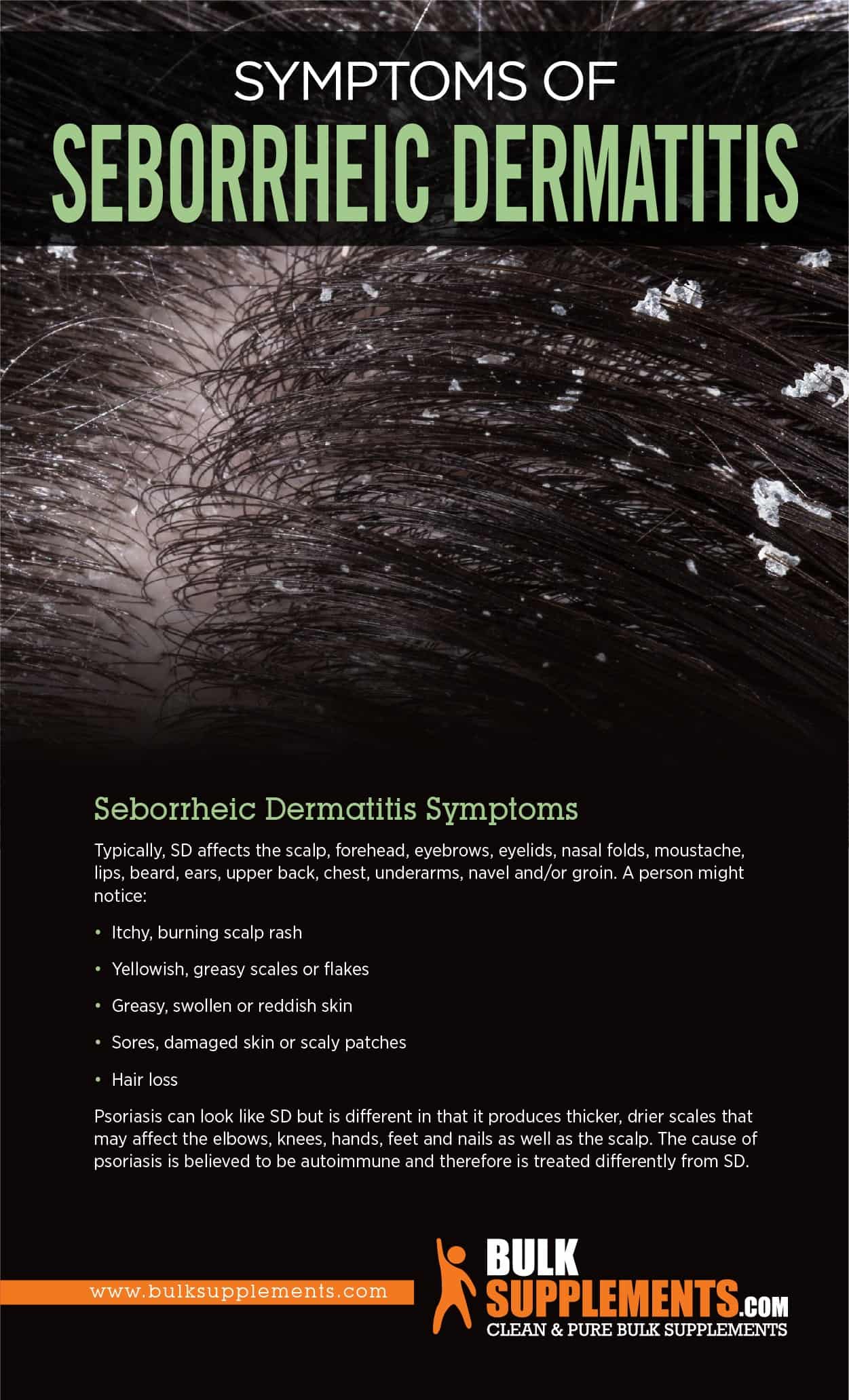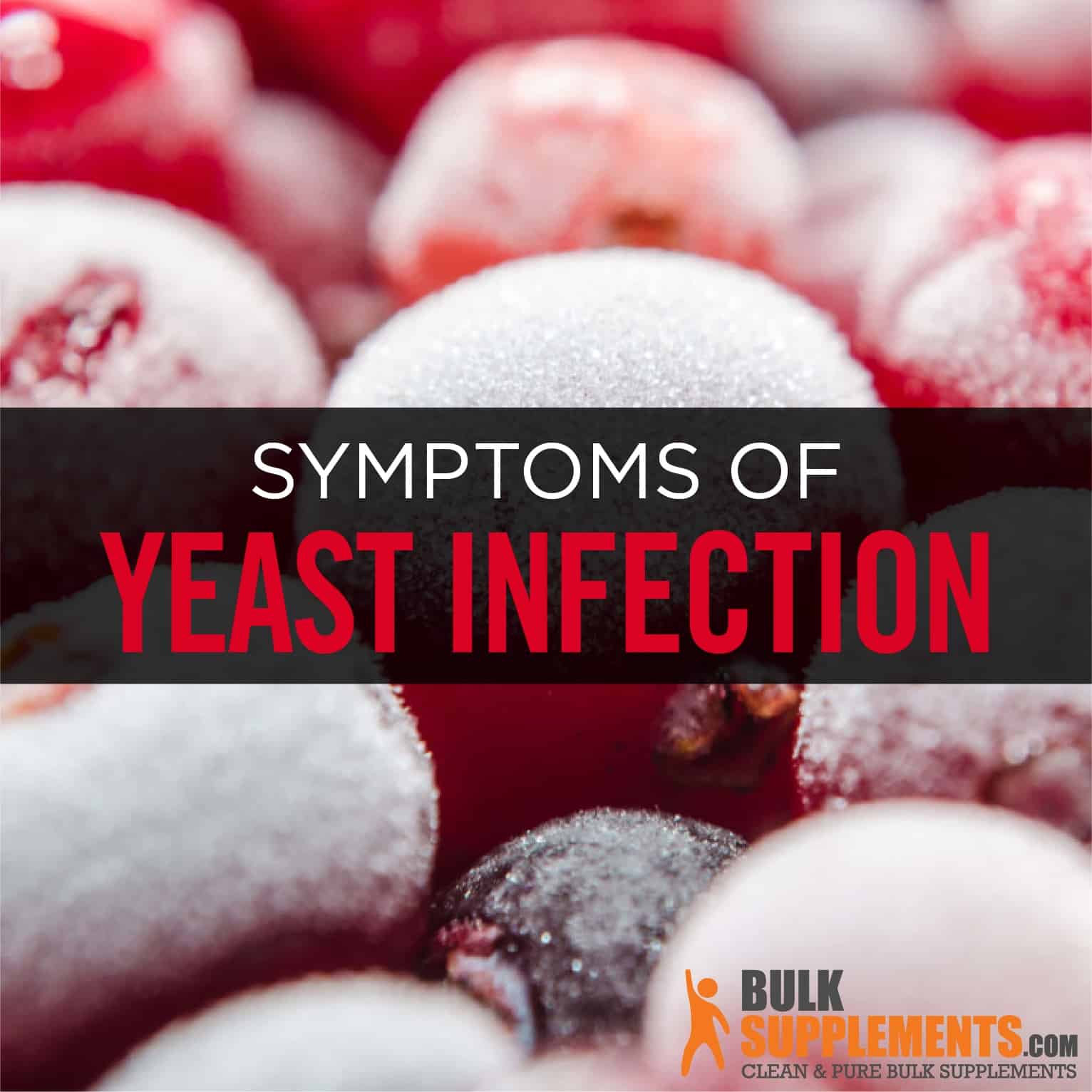Seborrheic Dermatitis: Symptoms, Causes & Treatment

Seborrheic Dermatitis
What is Seborrheic Dermatitis?
A flaking, itchy and inflamed scalp may seem like dandruff or eczema, but it could actually be a case of seborrheic dermatitis (SD) — a related but slightly different condition. SD describes a distinct type of eczema that affects areas of the head and trunk that have a high concentration of oil glands, skin folds or hairs.
Symptoms can be very distressing and usually appear in people between the ages of 30 and 60. SD affects about 3 percent of the general population and up to 83 percent of those with weakened immune systems due to factors like HIV, cancer or drugs.
The milder form of SD — dandruff — often appears during puberty and can go away with age. For some people, though, it may be a lifelong condition. Males experience dandruff a little more often, possibly because they have larger sebaceous glands on their scalps. Another form of SD called “cradle cap” only affects infants and usually resolves on its own.
SD and dandruff respond to the same treatments. Unfortunately, symptoms often recur. This is a frustrating reality for those who deal with these conditions but a combination of diet, topical treatments, and dietary supplements can help keep symptoms under control.
Seborrheic Dermatitis Symptoms
Typically, SD affects the scalp, forehead, eyebrows, eyelids, nasal folds, moustache, lips, beard, ears, upper back, chest, underarms, navel and/or groin. A person might notice:
- Itchy, burning scalp rash
- Yellowish, greasy scales or flakes
- Greasy, swollen or reddish skin
- Sores, damaged skin or scaly patches
- Hair loss
Psoriasis can look like SD but is different in that it produces thicker, drier scales that may affect the elbows, knees, hands, feet and nails as well as the scalp. The cause of psoriasis is believed to be autoimmune and therefore is treated differently from SD.

Causes of Seborrheic Dermatitis
Unlike other forms of eczema, SD isn’t caused by an allergic reaction. The root cause of SD remains unknown but several factors may play a role.
Yeast and Bacteria
A recent study suggested that the cause of SD may be a whole-body condition, and not just limited to the visibly affected skin areas. For example, people with dandruff have higher levels of various naturally present bacteria and fungi all over their skin. This increase may change the whole-body immune system’s response and damage the skin’s protective barrier.
Specifically, research shows that people with SD and dandruff have higher numbers of Malassezia yeast, a fungus everyone carries on the skin. This overpopulation, or individual immune system response to it, may skew the normal fungal and bacterial population balance on the skin, thus triggering SD.
People with SD also tend to have larger populations of the yeast Candida albicans in their bodies. Their immune systems may react similarly to both Malassezia and Candida. Significantly, antifungal medications improve SD in some people.
In addition to yeast, people with SD often have high numbers of the infectious, toxin-producing Staphylococcus aureus bacteria on their skin. This may, along with Malassezia, play a role in the development of seborrheic dermatitis.
Other Factors
- Hormones and genes
- Oily skin or acne. Higher sebum levels do not seem to be a direct cause of SD, but Malassezia yeasts thrive in a sebum-rich area.
- People with disorders of the central nervous system may have more sebum on their skin. Such disorders include Parkinson’s disease, stroke, brain injuries, damage to nerves in the head or paralysis of the trunk.
- Diet seems to affect the production of sebum in the skin.
- Obese people and those with roseacea, alcoholism, epilepsy and HIV are more prone to developing SD.
Triggers
Environmental and emotional circumstances can bring about flare-ups of SD. Known triggers include:
- Cold, dry weather
- Fatigue
- Hormonal changes or illness
- Strong detergents, soaps and chemicals
- Some medications, including lithium, psoralen and interferon
- Stressful events
- Depression or anxiety
Cradle Cap
“Cradle cap” describes SD that occurs in infants. Despite the name, it can affect other areas of the body like the face, skin folds, and diaper area. While it may look uncomfortable, it’s not believed to cause babies any distress. To treat it, the scales can be gently brushed after being softened with a mild shampoo. Topical treatments can also be recommended by a pediatrician.
Seborrheic Dermatitis Remedies and Supplements
Treatment of SD includes reducing inflammation, controlling fungal populations on the skin, and improving skin and scalp health. Prescription treatments for SD include special shampoos and creams, corticosteroids, immune suppressants, antifungals and sulfa antibiotics. While they provide relief, they do not cure SD, and Malassezia populations tend to revive. Because of side effects, medications such as antifungals, corticosteroids and tar cannot be used long term.
Alternatively, specific dietary changes and the use of natural remedies can help limit fungal and bacterial overgrowth and reduce SD symptoms.
As with all supplements meant to promote general well-being, the remedies listed here are by no means a substitute for legitimate medical advice. It’s always best to talk to a doctor if you are experiencing problems with your health before taking any supplements.
Diet
Many studies show that dietary changes can have a beneficial effect on seborrheic dermatitis as they affect weight, blood sugar, and skin conditions. Certain foods, like sugar and processed foods for example, exacerbate inflammation and fungal growth. By contrast, low-sugar and plant-based foods can help combat them.
Foods to include:
- Lean meats
- Poultry
- Eggs
- Seafood rich in omega-3 fatty acids such as sardines, mackerel, and salmon
- Sunflower seeds
- Flaxseeds
- Whole grains
- Beans
- Nuts
- Fruits and vegetables, including orange, yellow and leafy green produce rich in vitamin A
- Avocado
- Bananas
- Yogurt or probiotics, especially Lactobacillus paracasei
Foods to avoid or limit:
- Fatty and processed meats
- Oily and greasy foods
- Animal fats, lard, and full-fat dairy products
- Processed foods and trans fats
- Starchy foods such as potatoes, white bread and short-grain rice
- Refined flours
- Sugar, sweetened drinks, sugary snacks
- Foods with yeast and mold such as bread, cheese, beer and wine
Ginger Root Extract
The root of the ginger plant, Zingiber officinale, is related to curcumin and known for its many health benefits. It can be applied to the skin or taken by mouth. In studies, it was noted that:
- Ginger had significant antioxidant, anti-inflammatory and antimicrobial properties.
- It was effective against Malassezia, especially when combined with curcumin
- Ginger showed excellent antibacterial effects against staphylococci and even methicillin-resistant staphylococci (MRSA).
- It exhibited activity against Candida.
- High insulin levels boost sebum production. Ginger helps to control blood sugar and insulin levels.
Dosage: 1,000 mg once a day.
Possible side effects: Applying ginger to the skin may suppress local hair growth or cause a rash.
Warnings: Take with water to avoid heartburn. Ginger may lower blood sugar. Diabetics and pregnant or nursing women should consult with a physician before using it.
Garlic Extract
Garlic, the bulb of the Allium sativum plant, contains various beneficial compounds as well as vitamins and antioxidants. Studies found that:
SEE ALSO

Yeast Infection: Symptoms, Causes & Treatment
- Garlic has an effect on almost every part of the body. When eaten, it benefits the immune system and circulation in the skin.
- The garlic extract powder showed excellent antibacterial effects against several disease-causing bacteria, including staphylococci.
- It reduced the growth of both Malassezia and Candida.
- It was effective against many other fungi and may also fight viral infections.
- Garlic extract boosts the immune system by increasing virus-fighting natural killer cells and other immune responses.
- Extracts were shown to have antidandruff activity.
Dosage: 650 mg once or twice a day.
Possible side effects: Pungent breath, stomach upset, gas buildup or other gastrointestinal problems. Applying garlic to the skin may cause irritation, burns or sores.
Warnings: Excessive garlic can interfere with protease inhibitors. Pregnant or nursing women, diabetics, people scheduled for surgery and those taking blood thinners should consult with a physician before taking a garlic course.
Curcumin (Turmeric)
Curcumin is a compound in turmeric powder which is the ground root of the Curcuma longa plant. It is closely related to ginger. In India, curcumin is a traditional remedy for dandruff, various other skin conditions and removing unwanted hair. It can be taken by mouth or applied to the skin. In studies, research posited the following:
- Curcumin was able to pass through the top skin layer and penetrate cells. It may be effective against several bacteria and fungi, including staphylococci and Candida.
- Curcumin turmeric extract was effective against Malassezia.
- It reduced inflammation of the skin and triggered the destruction of damaged cells, thereby increasing the production of healthy cells.
- It boosted several of the immune system’s defense responses.
- An animal study suggested that curcumin improves skin recovery.
Dosage: 1,000 mg or less a day.
Possible side effects: Applying curcumin to the skin can cause local hair loss.
Warnings: Take with water or a meal. The powder may stain surfaces and fabrics. Pregnant or nursing women and people with blood-clotting problems or who are taking blood thinners should not use curcumin. When first taking it, people with gastrointestinal disorders or sensitive stomachs may experience stomach upset. People with a ginger allergy should consult with a physician before taking it. Anyone with high blood pressure or unstable blood sugar levels should exercise caution before using it.
Fish Oil
Fish oil is the only source of omega-3 fatty acids which are easily absorbed by the body. Fish oil capsules are considered safe by the U.S. Food and Drug Administration. They are free of mercury contamination as this chemical is absorbed by fish tissue, not the oil. In studies, it was found that:
- Omega-3 fatty acids in fish oil softgels were important for maintaining skin health. They strengthened the skin’s protective barrier, expedited healing, and reduced dry skin, itchiness and other abnormal conditions.
- A deficiency can cause rough, scaly skin and dermatitis.
- Both oral supplements and application to the skin were beneficial in showing antibacterial and infection-healing effects.
- Increasing omega-3 fatty acid intake reduced SD-related inflammation.
- Omega-3 fatty acids were found to have immune system-changing and antimicrobial properties, and were effective against MRSA and Candida.
Dosage: Two capsules, two to three times a day.
Possible side effects: Overuse may cause diarrhea, heartburn and stomach upset.
Warnings: These supplements should be immediately refrigerated. People who are allergic to fish or taking blood thinners should consult with a physician before taking fish oil.
The Bottom Line
SD symptoms can be distressing and also difficult to treat. As an alternative to medications with unpleasant or serious side effects, natural remedies are generally safe to use and can reduce symptoms. Certain dietary changes have also been proven effective in improving symptoms and reducing the risk of flares.



